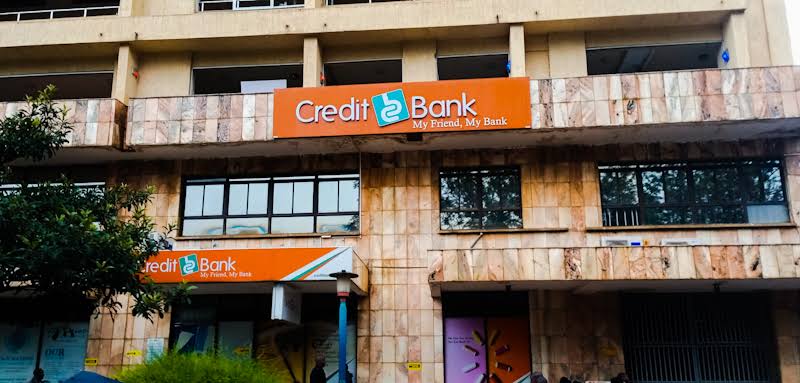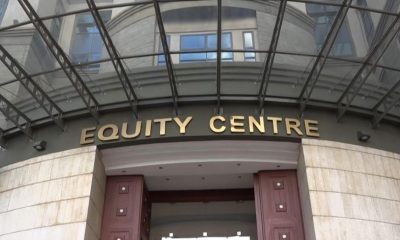Credit Bank faces existential crisis as non-performing loans hit 60%, raising questions about internal controls and possible collusion
Credit Bank finds itself at the center of a banking crisis that experts say could signal the latest case of internal fraud to rock Kenya’s financial sector. With three out of every five loans in default, the lender’s catastrophic loan book has sparked serious questions about whether deliberate schemes may have compromised the institution from within.
The bank’s auditor’s report reveals a financial institution in distress. Credit Bank’s core capital stands at just KSh 1.3 billion, falling dangerously short of the Central Bank of Kenya’s current minimum requirements and far below the KSh 3 billion threshold that will be mandatory by December 2025. The bank’s liquidity ratio of 15.1% also falls below the statutory minimum of 20%, painting a picture of an institution struggling on multiple fronts.
However, it is the loan portfolio that presents the most alarming evidence of potential systemic failure. At 60% non-performing loans, Credit Bank posts the worst ratio in the Kenyan banking sector, far exceeding the industry average. According to the Central Bank of Kenya (CBK), by December 2024, these bad loans accounted for 16.4% of all loans issued by banks – the highest level recorded in the past decade. Credit Bank’s performance is nearly four times worse than this already concerning national average.
The scale of the crisis raises fundamental questions about the bank’s lending practices. When such a high proportion of loans fail to perform, it suggests that basic risk assessment protocols may have been bypassed or compromised. Industry observers note that legitimate banking operations rely on stringent due diligence, proper collateral verification, and thorough assessment of borrowers’ repayment capacity before loan approval.
The situation bears uncomfortable similarities to previous banking collapses that were rooted in internal fraud. Chase Bank’s 2016 collapse was partly attributed to questionable insider lending practices, while Imperial Bank was shuttered following massive insider fraud involving fictitious loans. More recently, Equity Bank was forced to terminate several employees over internal fraud targeting its mobile lending systems.
Credit Bank’s response to the crisis has been to announce plans for “aggressive” collateral sales and completion of stalled projects to improve liquidity. The bank also indicated it would pursue negotiated settlements with defaulters. However, these reactive measures may reveal more about the institution’s desperation than its strategic planning. The decision to aggressively liquidate assets could further erode customer confidence at a time when the bank desperately needs to rebuild credibility.
The announcement of negotiated settlements is particularly telling, as it suggests the bank acknowledges it may not recover full loan amounts. This raises critical questions about the original terms under which these loans were approved and whether proper due diligence was conducted before disbursement.
By the end of September (the latest available bank financials), 12 banks had core capital of below Sh3 billion, indicating that Credit Bank is not alone in facing capital adequacy challenges. However, the combination of capital shortfalls and an unprecedented non-performing loan ratio creates a unique crisis that demands urgent intervention.
While Kenya’s challenging macroeconomic environment, including high inflation and rising interest rates, has affected the banking sector broadly, most institutions have managed to maintain stability through tightened lending practices and operational efficiency improvements. Credit Bank’s extreme loan default rate suggests problems that go beyond external economic pressures.
The bank now faces a race against time to address its capital adequacy requirements while managing a loan book that appears fundamentally compromised. Without a thorough forensic investigation into its largest defaulters and a comprehensive audit of its lending practices, any recovery efforts may prove insufficient.
For Credit Bank to survive as a going concern, it must move beyond damage control to address the root causes of its crisis. This includes answering difficult questions about whether internal actors may have deliberately compromised the institution’s lending standards for personal gain. Until these fundamental issues are resolved, the bank’s attempts at aggressive recovery may appear more like desperate measures than strategic solutions.
The unfolding Credit Bank crisis serves as a stark reminder of the importance of robust internal controls and independent oversight in banking operations. As the institution fights for survival, its ultimate fate may depend on how quickly and thoroughly it can address the systemic failures that led to this unprecedented level of loan defaults.


 Business2 weeks ago
Business2 weeks ago
 Business2 weeks ago
Business2 weeks ago
 Investigations6 days ago
Investigations6 days ago
 News1 week ago
News1 week ago
 Investigations2 weeks ago
Investigations2 weeks ago
 Business1 week ago
Business1 week ago
 Investigations6 days ago
Investigations6 days ago
 News2 weeks ago
News2 weeks ago
















